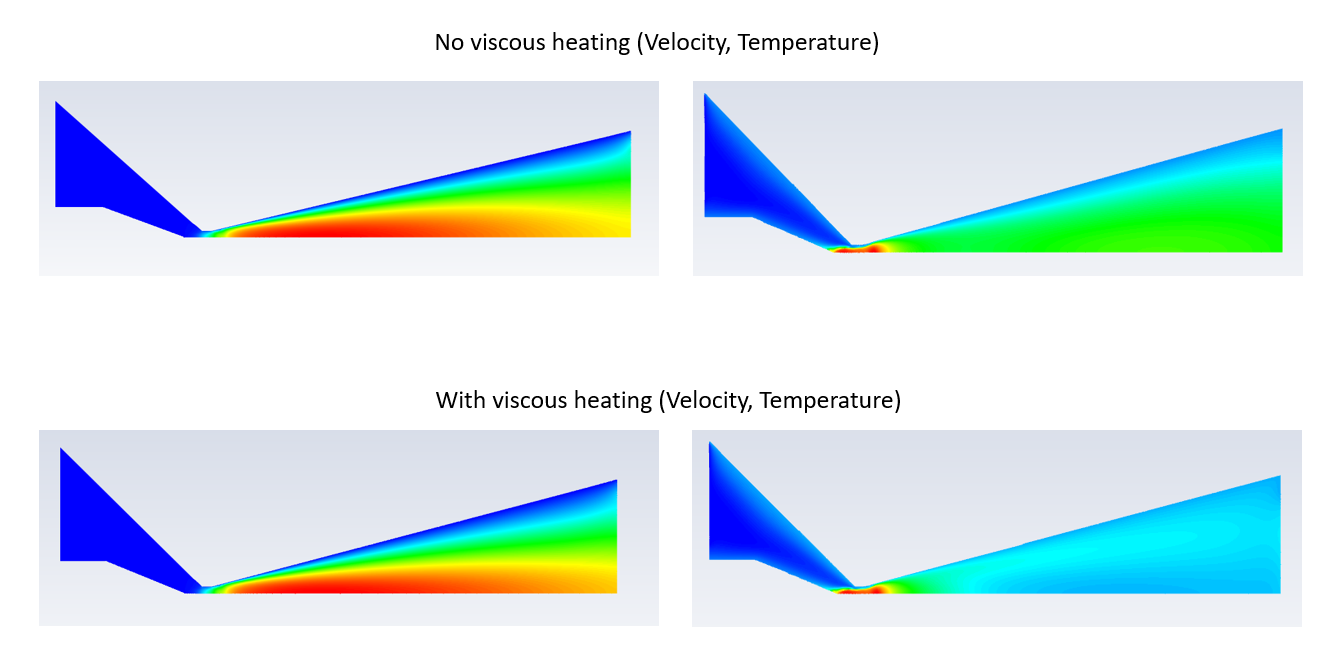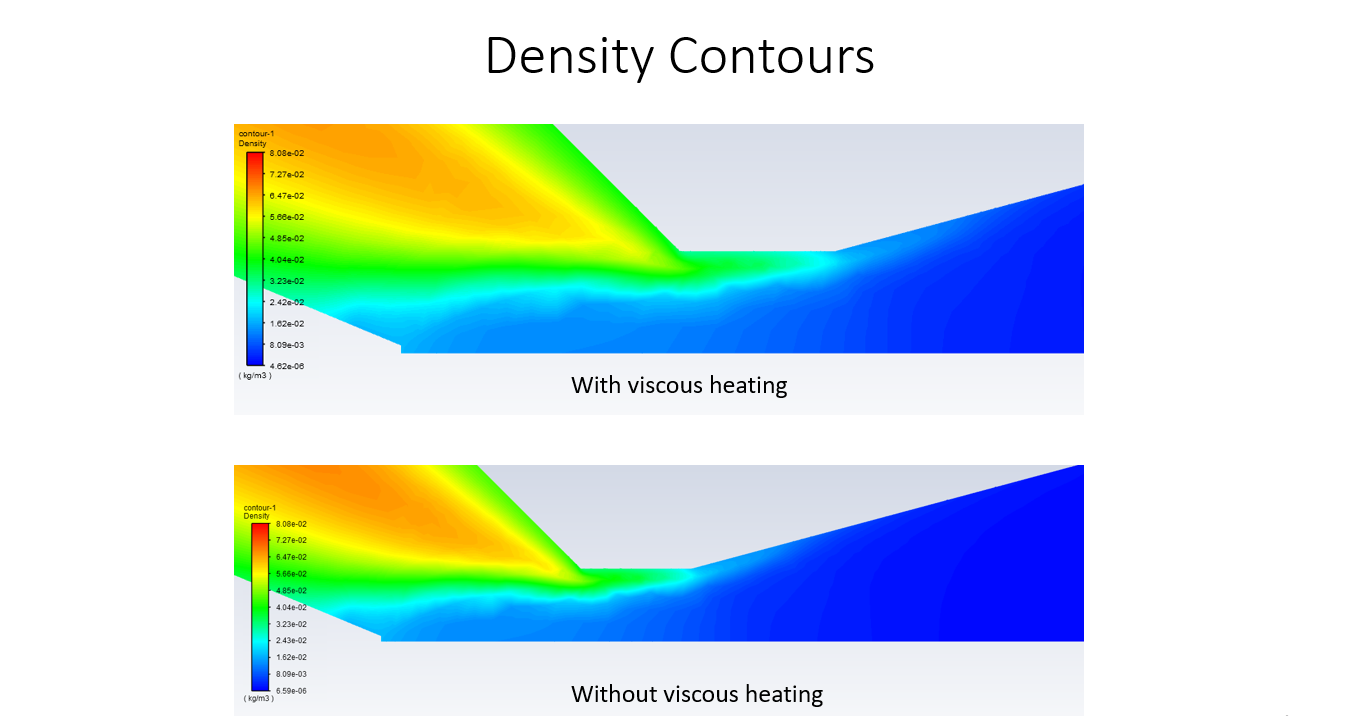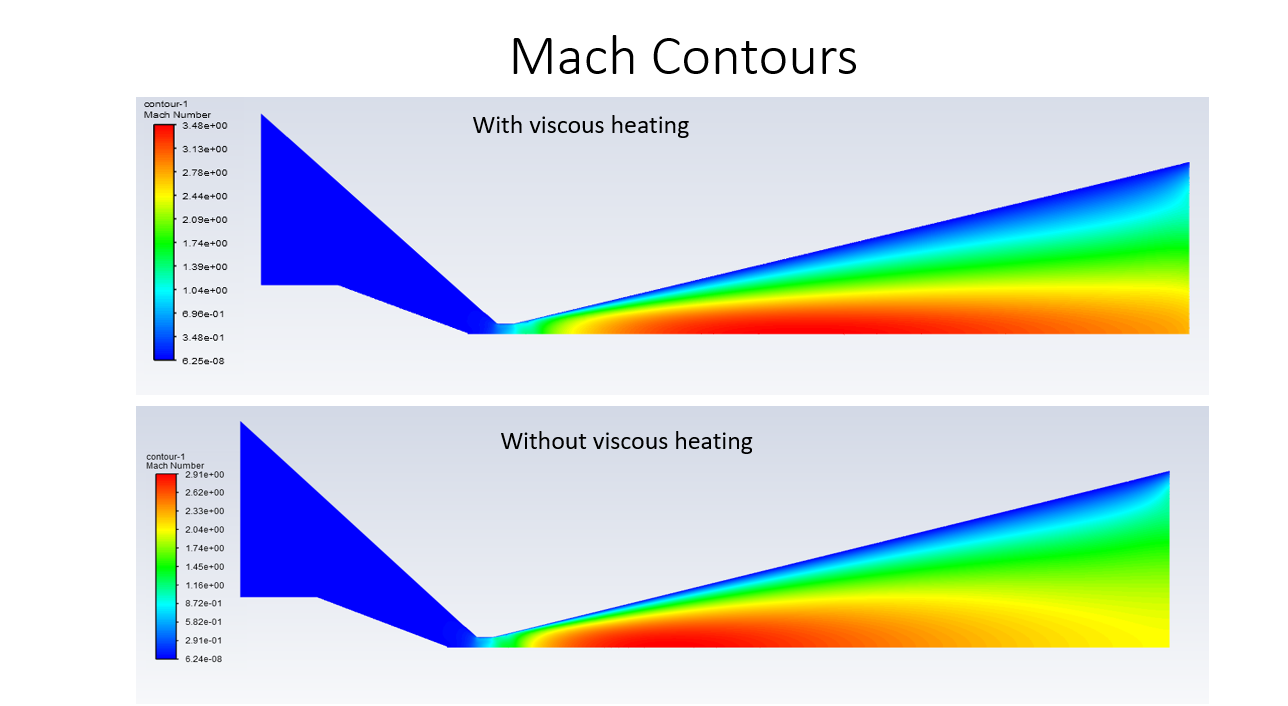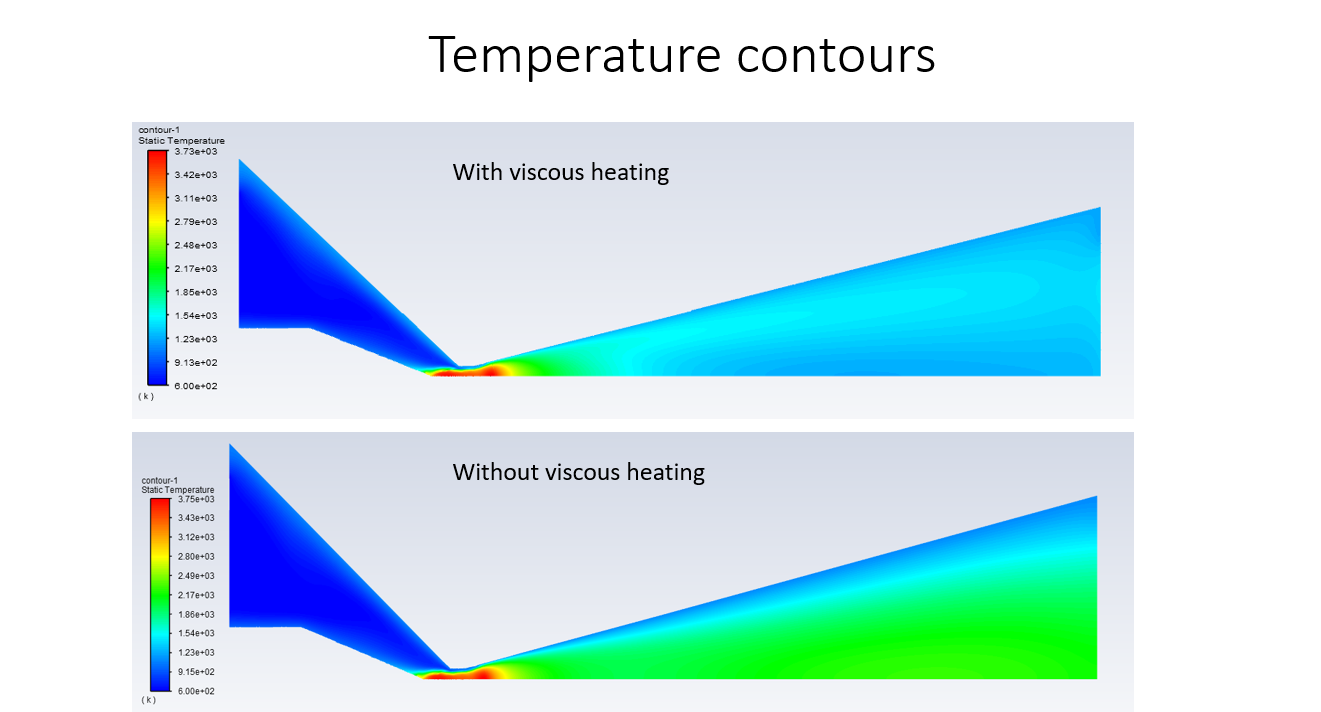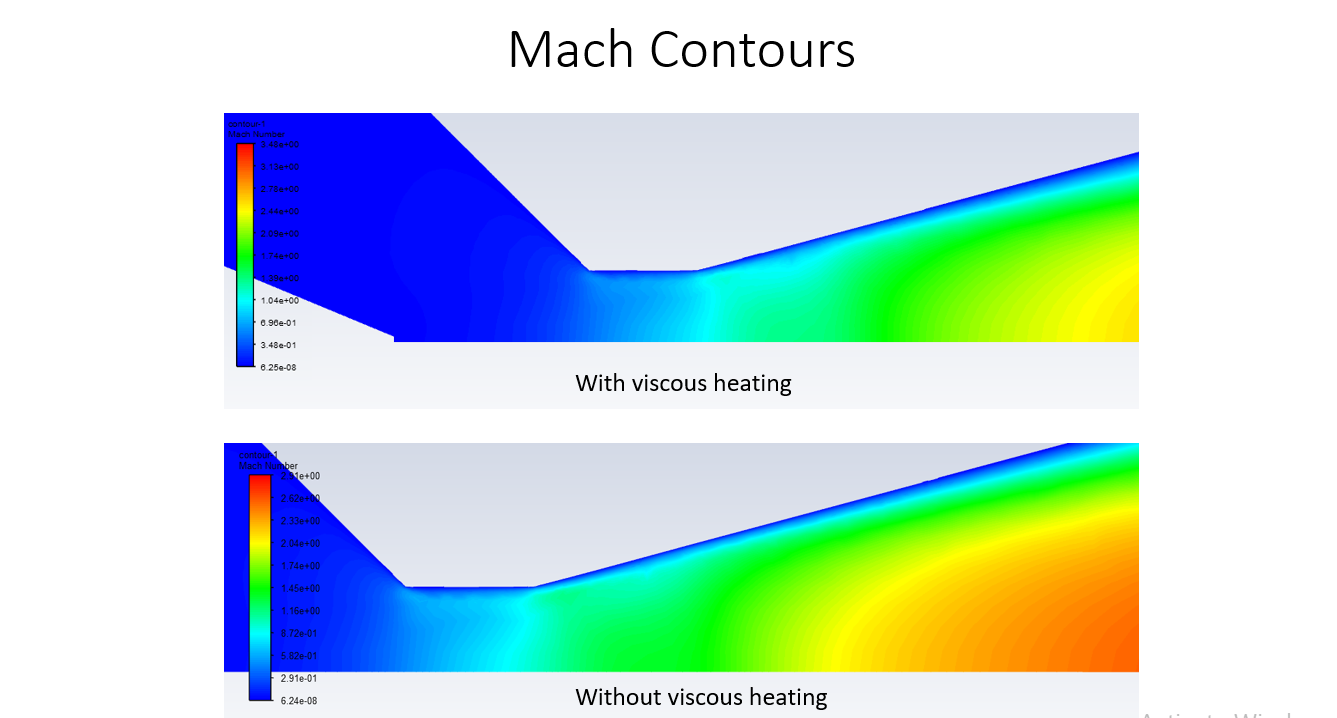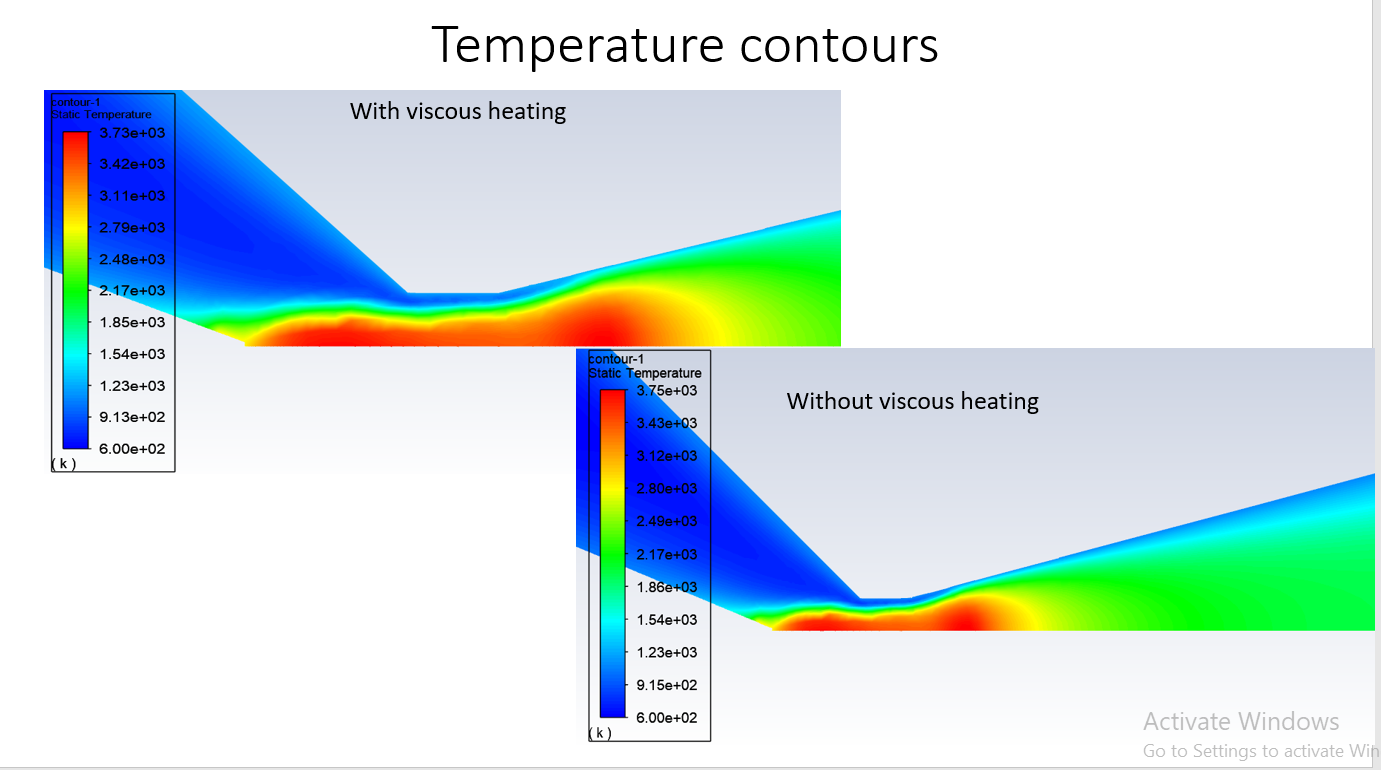TAGGED: fluent, simulation
-
-
October 27, 2021 at 4:54 pm
ham
SubscriberHi,
I'm simulating a small arc jet nozzle (hence the high constrictor temperature) and I was experimenting with viscous heating and I'm struggling to understand the results. I'm simulating Hydrogen using a transient pressure-based solver with laminar flow. My understanding of viscous heating is it becomes noticeable in highly compressible flows, which this is. My expectation was that it might increase temperatures near the wall, but it seems to have a big effect on the total flow field.
As can be seen in the contours below, turning on viscous heating appears to result in a cooler near axis flow, channeling the hot gasses around the axis and overall leading to lower exhaust temperatures. This doesn't seem like a physically plausible solution to me, and I haven't seen anything similar in literature.
Any ideas on why viscous heating may cause this strange solution? I would expect it should be on for my simulation, but seeing this result I'm keeping it off for now...
The top row shows solutions with viscous heating off, the bottom row is viscous heating on. The left column shows axial velocity, the right column shows temperature. Scales are the same for each velocity/temperature contour.
October 28, 2021 at 1:48 pmRob
Forum ModeratorCan you zoom into the throat and plot Mach Number? Also density. Knowing what the data scales is would also be useful.
The main theory is covered here, https://ansyshelp.ansys.com/account/Secured?returnurl=/Views/Secured/corp/v212/en/flu_th/flu_th_sec_hxfer_theory.html%23flu_th_sec_hxfer_theory_viscous
November 6, 2021 at 5:48 pmViewing 2 reply threads- The topic ‘Viscous heating near wall vs. far wall effects in a rocket nozzle’ is closed to new replies.
Innovation SpaceTrending discussions- air flow in and out of computer case
- Varying Bond model parameters to mimic soil particle cohesion/stiction
- Eroded Mass due to Erosion of Soil Particles by Fluids
- I am doing a corona simulation. But particles are not spreading.
- Centrifugal Fan Analysis for Determination of Characteristic Curve
- Issue to compile a UDF in ANSYS Fluent
- Guidance needed for Conjugate Heat Transfer Analysis for a 3s3p Li-ion Battery
- JACOBI Convergence Issue in ANSYS AQWA
- affinity not set
- Resuming SAG Mill Simulation with New Particle Batch in Rocky
Top Contributors-
4167
-
1487
-
1363
-
1194
-
1021
Top Rated Tags© 2025 Copyright ANSYS, Inc. All rights reserved.
Ansys does not support the usage of unauthorized Ansys software. Please visit www.ansys.com to obtain an official distribution.
-

